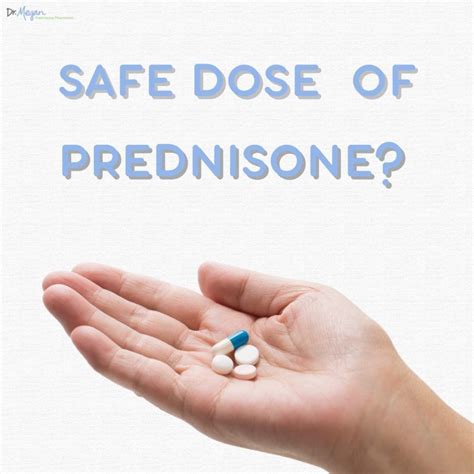Intro
Learn how to take Prednisone safely and effectively with our comprehensive guide. Discover the benefits and risks of this steroid medication, and follow our step-by-step instructions to minimize side effects and maximize treatment success. Get expert advice on dosage, interactions, and tapering to ensure a healthy recovery.
Prednisone is a powerful steroid medication that is commonly used to treat a variety of medical conditions, including inflammatory diseases, autoimmune disorders, and allergies. While prednisone can be an effective treatment option, it can also have serious side effects, especially when taken for extended periods of time or in high doses. In this article, we will provide a step-by-step guide on how to take prednisone safely and minimize its potential risks.

Understanding Prednisone and Its Uses
Before we dive into the safety guidelines, it's essential to understand what prednisone is and how it works. Prednisone is a synthetic corticosteroid that mimics the effects of cortisol, a hormone produced by the adrenal glands. Cortisol plays a crucial role in regulating various bodily functions, including inflammation, immune response, and metabolism. Prednisone is used to treat conditions such as asthma, rheumatoid arthritis, lupus, and allergies, among others.
Step 1: Consult Your Doctor
If your doctor has prescribed prednisone, it's essential to discuss the potential risks and benefits with them. Your doctor will help you determine the optimal dosage and treatment duration based on your specific condition and medical history. Be sure to ask questions and express any concerns you may have about taking prednisone.
Step 2: Follow the Dosage Instructions
To minimize the risk of side effects, it's crucial to follow the dosage instructions provided by your doctor. Take the exact dose prescribed, and do not exceed the recommended dose. Prednisone is typically taken orally, and the dosage may vary depending on the condition being treated.
Step 3: Take Prednisone with Food
Taking prednisone with food can help reduce stomach upset and other gastrointestinal side effects. It's recommended to take the medication with a meal or snack to minimize discomfort.
Step 4: Monitor Your Blood Sugar Levels
Prednisone can increase blood sugar levels, especially in people with diabetes. If you have diabetes, it's essential to monitor your blood sugar levels regularly while taking prednisone. Your doctor may need to adjust your diabetes medication to compensate for the increased blood sugar levels.
Step 5: Watch for Signs of Infection
Prednisone can suppress the immune system, making you more susceptible to infections. Be aware of any signs of infection, such as fever, chills, or cough, and report them to your doctor immediately.
Step 6: Manage Weight Gain
Prednisone can cause weight gain, particularly in the midsection of the body. To manage weight gain, it's essential to maintain a healthy diet and exercise regularly. Your doctor may recommend a weight management plan to help you stay on track.
Step 7: Get Regular Blood Tests
Regular blood tests can help monitor the effectiveness of prednisone and detect any potential side effects. Your doctor may recommend regular blood tests to check your liver function, blood sugar levels, and other vital signs.
Step 8: Avoid Stopping Prednisone Abruptly
Stopping prednisone abruptly can lead to withdrawal symptoms, such as fatigue, joint pain, and nausea. If you need to stop taking prednisone, your doctor will gradually taper off the dose to minimize the risk of withdrawal symptoms.
Common Side Effects of Prednisone
While prednisone can be an effective treatment option, it's essential to be aware of its potential side effects. Common side effects of prednisone include:
- Weight gain
- Mood changes
- Insomnia
- Increased appetite
- Water retention
- Stomach upset
- Headaches
- Dizziness
Serious Side Effects of Prednisone
In rare cases, prednisone can cause serious side effects, including:
- Increased risk of infections
- Osteoporosis
- Cataracts
- Glaucoma
- High blood pressure
- Cardiovascular disease
Conclusion: Taking Prednisone Safely
Taking prednisone safely requires careful attention to dosage instructions, monitoring of side effects, and regular communication with your doctor. By following these steps and being aware of the potential risks and benefits, you can minimize the risks associated with prednisone and maximize its therapeutic benefits.

Frequently Asked Questions
What is prednisone, and how does it work?
+Prednisone is a synthetic corticosteroid that mimics the effects of cortisol, a hormone produced by the adrenal glands. It works by reducing inflammation and suppressing the immune system.
What are the common side effects of prednisone?
+Common side effects of prednisone include weight gain, mood changes, insomnia, increased appetite, water retention, stomach upset, headaches, and dizziness.
Can I stop taking prednisone abruptly?
+No, stopping prednisone abruptly can lead to withdrawal symptoms. Your doctor will gradually taper off the dose to minimize the risk of withdrawal symptoms.
We hope this article has provided you with valuable information on how to take prednisone safely. Remember to always follow the dosage instructions provided by your doctor and monitor your side effects regularly. If you have any further questions or concerns, please don't hesitate to reach out to your doctor or healthcare provider.
